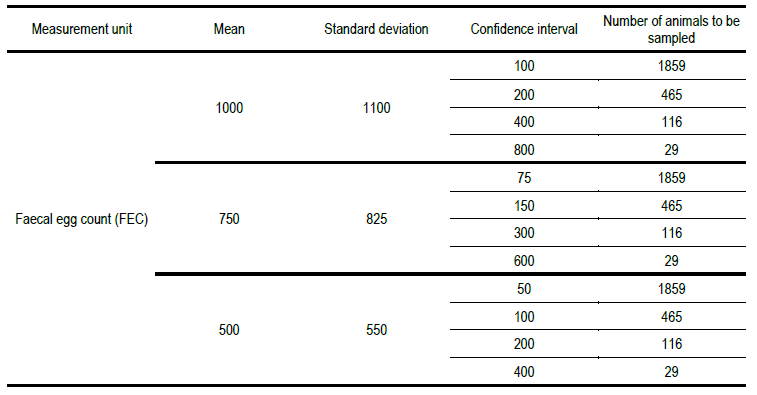Sample size needed to make decisions about measuring FEC in a contemporary group of lambs
DOI:
https://doi.org/10.31285/AGRO.24.206Keywords:
faecal worm egg count, parasite burden, sampling, sheepAbstract
Faecal egg count (FEC) is used in sheep to decide when to drench. It is also used in genetic evaluations, in which case FEC should be recorded when the parasite burden is large enough so that variation among animals can be expressed. Another requisite is that the fraction of animals with zero FEC should be below 0.1. In order to decide the appropriate moment for drenching, or FEC recording in the whole group in the case of genetic evaluations, FEC is monitored in a random sample of animals from the group. Two questions arise: (i) what is the appropriate sample size to determine if the average FEC has reached a threshold? and (ii) what is the sample size needed to determine that the fraction of animals with a FEC of zero is 0.1 or less? In this paper we calculate the number of animals to be sampled for a range of FEC means and standard deviations, as well as for different fractions of animals with a zero FEC. Regarding FEC, we found that sample size was greater than the recommended 10 to 20 animals. With respect to fraction of animals with a FEC of zero, sample size was even greater than for FEC. Given the insufficient sample size currently used, we recommend a revision of the topic and a statistically based reformulation of sampling guidelines.
Downloads

Published
How to Cite
Issue
Section
| Article metrics | |
|---|---|
| Abstract views | |
| Galley vies | |
| PDF Views | |
| HTML views | |
| Other views | |

















